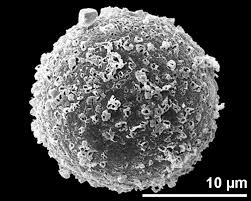Botany Notes On – Palynology – For W.B.C.S. Examination.
Botany is highly scoring optional subject in W.B.C.S. Mains exam. This is one of the optional subjects that the WBCS offers candidates in the mains exam. Not many candidates opt for it as it is a specialized subject. This article talks about Botany as an optional for the W.B.C.S. mains exam and gives a few tips to prepare for this optional. It will be difficult to any aspirants does not have a prior knowledge of Botany and Agriculture.Also, aspirants with a background in biotechnology can also opt for this optional subject.Palaeopalynology (palaeo-/paleo- is the prefix used in a combining form to denote relation with fossils) is one of the disciplines of palynology and concerned with the study of fossil pollen grains and spores.Continue Reading Botany Notes On – Palynology – For W.B.C.S. Examination.
Pollen grains lie there for very long periods of time. Humus collects and thus pollen grains get fossilized. But the characteristics of surface pattern and aperture are still retained, and are of great diagnostic value. These deposits become a storehouse of information from where ancient vegetation can be reconstructed.
In such deposits types of pollen and their abundance become means of statistical analysis that leads to reconstruct palaeoenvironment. Changes of types of pollen and spores in the different strata reveal the change of vegetation and accordingly the changing pattern of past climate can be interpreted. It is to note that in the study of palaeopalynology most of pollen found come from anemophilous plants. Entomophilous pollen grains are under-represented.
Palaeopalynology is most effectively exploited in the investigation of vegetation history. It is fruitfully employed with regard to the pollen grains of Quaternary deposits, because most of pollen in these deposits is referable to extant genera and species. Pollen and their chronological abundance in sediments provide a means of tracing the history of vegetation.
On the basis of palynological data Bryant et al. (1985) reconstructed the vegetation changes that occurred in Texas during late Quaternary. The data indicate that the flora of United States, including Picea glauca, invaded Texas during late Quaternary. Coniferous forests were present in Texas during the full- glacial period but those were not much widespread.
During post-glacial and part of the late-glacial period grassland savannas were present in North Texas. Chronological abundance of pollen grains provides information regarding arrival, expansion and decline of major trees like pine, birch and oak etc. Pollen stratigraphic studies enabled to calculate the population doubling time for forest trees during their phase of exponential population growth.Previous Years Question Papers are a must when it comes to preparing for Optional subjects.
This type of study was carried out in early Holocene of Eastern England. The exponential population growth ranges from 58-73 years for Pinus sylvestris and about 100 years of Tilia cordata. Apart from origin and expansion the decline of plant taxa can also be detected through pollen stratigraphic studies, e.g. the decline of Castanea dentata and Tsuga canadensis in Northeastern United States.
Pollen analysis of peat profiles collected from Calcutta Metro Railway Excavation Project reveals the existence of Heritiera, Exocaria, Phoenix paludosa and Barringtonia etc., that form the present-day mangrove vegetation of Sundarban.Also read , Notes on , Varna Organisation – Ancient History Notes – For W.B.C.S. Examination.
Pollen contents of peat samples were investigated at the laboratory of Division of Palynology and Environmental Biology, Bose Institute, Kolkata. With the aid of pollen stratigraphic studies the past vegetation of an area can be reconstructed. This becomes a tool in interpreting palaeoclimate, palaeoecology etc. of the region under study.
Please subscribe here to get all future updates on this post/page/category/website


 Toll Free 1800 572 9282
Toll Free 1800 572 9282  mailus@wbcsmadeeasy.in
mailus@wbcsmadeeasy.in



















































































































